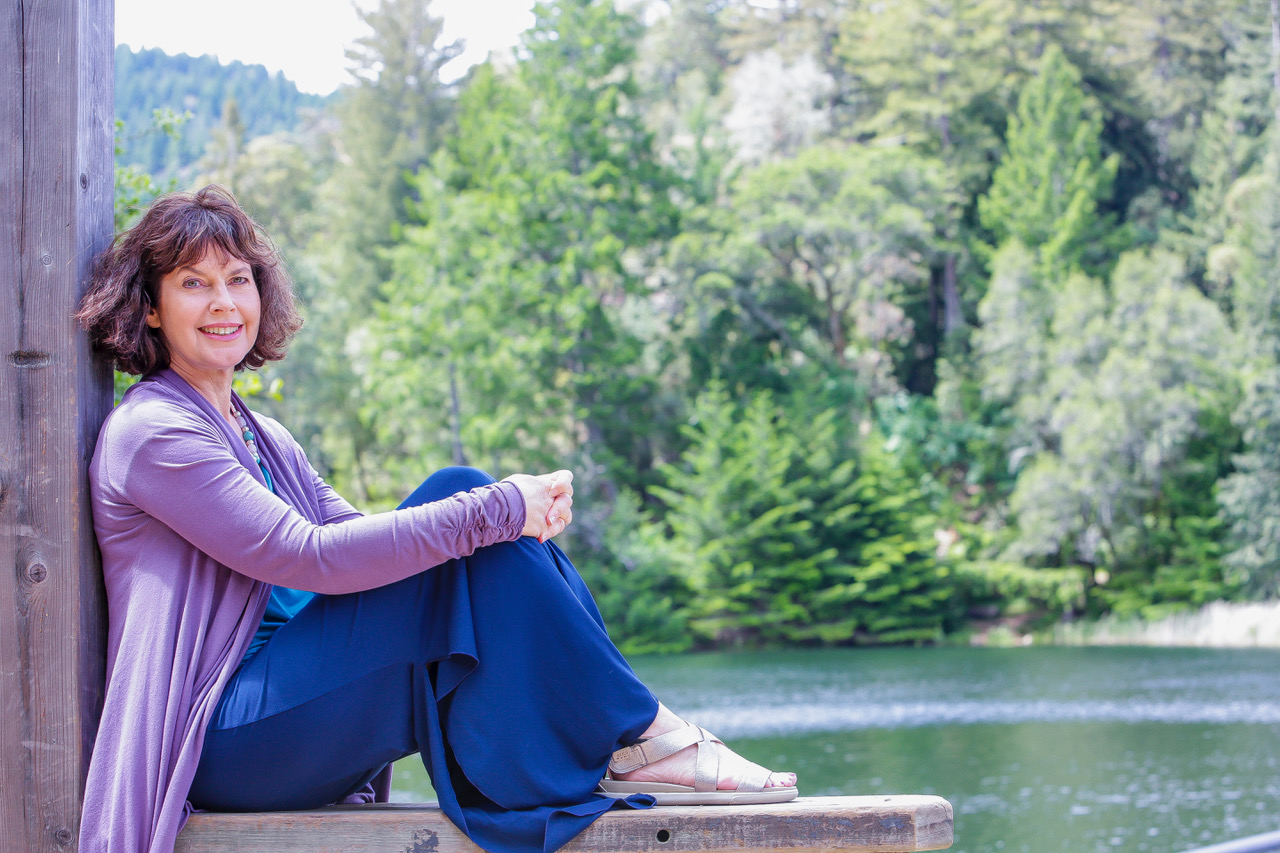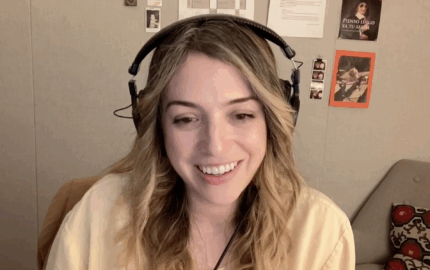Two days to deadline. You haven’t written a word — just scribbles and a few sad-faced glyphs in the margins of a skeletal outline. You’re surrounded by great raw material —a tower of notes, a transcribed interview, and three books authored by your subject — but your fingers remain collapsed on the keyboard.
You are in the gap phase, or bardo, which Tibetan Buddhists describe as the place of uncertainty between being and becoming, the pause between in-breath and out-breath, the space between life and death.
George Saunders made great use of that mysterious terrain. His debut full-length novel, “Lincoln in the Bardo," won the 2017 Man Booker Prize. But sitting here now, listening to the tick of the deadline clock, being in the bardo feels more like someone dart-gunned your brain.
I’ve been doing this work long enough to know this condition is not unique. Most writers struggle against these gap moments, usually when we make the awkward transition from reporting to writing. We panic, turning up the volume on mental static and self-doubt. What will my editor think? My sources? My readers? We make a stressful part of the process even worse.
It doesn’t have to be that way. Not according to Anne Cushman, author, editor and mindfulness instructor.
“We want to be able to turn the volume down on that, and have some joy,” she told me in a recent interview. “There’s choice around our own mental radio stations — which ones we listen to. Do we really want an internal news crawl playing in our heads all the time?”
The solution? Mindfulness, which Cushman defines as “the art of what we’re paying attention to and how we're paying attention to it.” She has spent the majority of her life paying attention to two passions: writing and personal transformation. She has published a memoir, a novel and a meditation guide; her essays have been carried in a range of publications, from The New York Times to Tricycle: The Buddhist Review.
Through all that, the station she listens to most is tuned to personal transformation. As a member of the Teacher’s Council at Spirit Rock Meditation Center in California, she founded and co-directs Mindfulness Meditation and Yoga Training and also mentors individuals, particularly writers.
“I was one of those (children) who would make up stories and tell them to myself before I could hold a crayon,” Cushman told me.
Once holding that crayon, she started writing stories, and never stopped. However, something else caught her attention in college.
She was taking creative writing classes with Joyce Carol Oates at Princeton and writing for local newspapers. Then she took a class called “The Self and World Religions,” which, she says, “blew my mind.”
That class examined the self and personal identity from the perspective of different spiritual traditions: Buddhism, Hinduism, and yoga. Cushman switched her major to comparative religions, and has since married the two passions.
Personally, I’ve been a student of Buddhism and meditation for decades. I’ve been a professional songwriter, poet and journalist for just as long. But no matter how many songs, poems or stories I compose, I lose my composure around deadline.
Last spring I discovered Cushman’s book, The Mama Sutra, a heartbreaking memoir reflecting on the loss of her first child. Though not about writing, or deadlines, this skillful author addressed a universal dilemma: how to deal with chaos and disturbing emotions. Her answer? Mindfulness practice. Essentially this boils down to facing difficult emotions head-on, without judgment. And instead of berating ourselves when we’re stuck in the bardo, move forward with a bit of compassion.
Knowing how elusive that sense of calm can be when I write, I reached out to Cushman. Our conversation has been edited slightly for length and clarity, and combines her answers with my italicized summaries or experiences.
What can mindfulness teach writers?
Mindfulness teaches us to open up to the space between stimulus and response…how to show up again and again for something that might seem boring and repetitive, but if we give it our full attention, it can reveal itself, and lead us into our humanity.
What are the benefits of mindfulness training?
Listening inward increases our ability to listen to intuitive impulses and cues. Also, it enhances our ability to live more fully in the present moment in a relaxed and non-judgmental way without getting swept up in catastrophizing thoughts about the past or the future.
My version:
Where to start?
Ask yourself: how do I want to be as I do this activity, in a way that’s really satisfying, so that I’m coming from a deep place? Even if you’re just writing a manual about installing widgets and dry cleaners, can you connect with the place in you that cares about widgets being installed properly?
Set your intention for the story you’re working on, and ask:
What are some simple mindfulness practices writers can try?
One is the three-part check-in: Body, Mind, Heart
Another is Basic Breath Meditation: For a few minutes come back, again and again, to breathe. Freeing your breath as a writer is releasing the patterns of unconscious constriction that might block the free-flow of your breath, which is a direct way of freeing your creative energy.
Telltale signs of constriction for me: Tight jaw. Sore neck. Shoulder creep, which Cushman describes as “defensive postures of fear.”
When we’re stuck in habitual, fear-based patterns of movement and holding our body, we’re more likely to be stuck in habitual ways of perceiving the world. These habitual defensive patterns can keep us from being as spontaneous and creative in our writing as we might otherwise be, also from relaxing enough to express and trust our true voice.
How can writers stay grounded on deadline?
You don’t have to believe everything you think.
This refers to the chattering “monkey mind,” a Buddhist term describing unsettled, restless, or confused thoughts, like, “Boy, am I a lousy writer.” Instead Cushman suggests using thoughts skillfully. For instance, choose what you want to devote your time and mental energy to; also, how you want to relate to those thoughts. Finally, drop the monkey thoughts, and select thoughts that matter to you.
From the point of view of mindfulness meditation, any activity can be held in a very caring and present way…I think the real gift of mindfulness meditation is that it gives you a way to relate to your thoughts rather than to be driven by them.
Cushman’s newly released "Guided Meditation for Writer’s" app, produced by Simple Habits, will be released later this month.
You are in the gap phase, or bardo, which Tibetan Buddhists describe as the place of uncertainty between being and becoming, the pause between in-breath and out-breath, the space between life and death.
George Saunders made great use of that mysterious terrain. His debut full-length novel, “Lincoln in the Bardo," won the 2017 Man Booker Prize. But sitting here now, listening to the tick of the deadline clock, being in the bardo feels more like someone dart-gunned your brain.
I’ve been doing this work long enough to know this condition is not unique. Most writers struggle against these gap moments, usually when we make the awkward transition from reporting to writing. We panic, turning up the volume on mental static and self-doubt. What will my editor think? My sources? My readers? We make a stressful part of the process even worse.
It doesn’t have to be that way. Not according to Anne Cushman, author, editor and mindfulness instructor.
“We want to be able to turn the volume down on that, and have some joy,” she told me in a recent interview. “There’s choice around our own mental radio stations — which ones we listen to. Do we really want an internal news crawl playing in our heads all the time?”
The solution? Mindfulness, which Cushman defines as “the art of what we’re paying attention to and how we're paying attention to it.” She has spent the majority of her life paying attention to two passions: writing and personal transformation. She has published a memoir, a novel and a meditation guide; her essays have been carried in a range of publications, from The New York Times to Tricycle: The Buddhist Review.
Through all that, the station she listens to most is tuned to personal transformation. As a member of the Teacher’s Council at Spirit Rock Meditation Center in California, she founded and co-directs Mindfulness Meditation and Yoga Training and also mentors individuals, particularly writers.
“I was one of those (children) who would make up stories and tell them to myself before I could hold a crayon,” Cushman told me.
Once holding that crayon, she started writing stories, and never stopped. However, something else caught her attention in college.
She was taking creative writing classes with Joyce Carol Oates at Princeton and writing for local newspapers. Then she took a class called “The Self and World Religions,” which, she says, “blew my mind.”
That class examined the self and personal identity from the perspective of different spiritual traditions: Buddhism, Hinduism, and yoga. Cushman switched her major to comparative religions, and has since married the two passions.
Personally, I’ve been a student of Buddhism and meditation for decades. I’ve been a professional songwriter, poet and journalist for just as long. But no matter how many songs, poems or stories I compose, I lose my composure around deadline.
Last spring I discovered Cushman’s book, The Mama Sutra, a heartbreaking memoir reflecting on the loss of her first child. Though not about writing, or deadlines, this skillful author addressed a universal dilemma: how to deal with chaos and disturbing emotions. Her answer? Mindfulness practice. Essentially this boils down to facing difficult emotions head-on, without judgment. And instead of berating ourselves when we’re stuck in the bardo, move forward with a bit of compassion.
Knowing how elusive that sense of calm can be when I write, I reached out to Cushman. Our conversation has been edited slightly for length and clarity, and combines her answers with my italicized summaries or experiences.
What can mindfulness teach writers?
Mindfulness teaches us to open up to the space between stimulus and response…how to show up again and again for something that might seem boring and repetitive, but if we give it our full attention, it can reveal itself, and lead us into our humanity.
What are the benefits of mindfulness training?
Listening inward increases our ability to listen to intuitive impulses and cues. Also, it enhances our ability to live more fully in the present moment in a relaxed and non-judgmental way without getting swept up in catastrophizing thoughts about the past or the future.
My version:
- It helps writers become more alive, responsive and compassionate towards themselves and others.
- It settles the mind and heightens our ability to focus, concentrate, and pay attention to what WE choose to pay attention to.
- It enhances deep inner listening.
- It helps us identify what we really care about most, the result being, we enjoy the writing process more.
Where to start?
Ask yourself: how do I want to be as I do this activity, in a way that’s really satisfying, so that I’m coming from a deep place? Even if you’re just writing a manual about installing widgets and dry cleaners, can you connect with the place in you that cares about widgets being installed properly?
Set your intention for the story you’re working on, and ask:
- Why am I writing this?
- What do I care about and value most about this topic?
- Why is it important?
What are some simple mindfulness practices writers can try?
One is the three-part check-in: Body, Mind, Heart
- Body: Take three to five minutes to pause and become aware of what’s present in your body. How am I feeling? Where is it ripped? Where might I relax and soften and be more at ease for this moment? What am I seeing and hearing in my current environment?
- Mind: Check into the contents of the mind. Am I lost in a story? Am I rehearsing a future meeting, or am I replaying some argument from five days ago? What’s the stream of the mind right now?
- Heart: What’s going on in the heart? What’s the emotional state? Drop in below the content of thought. What am I feeling? What’s the emotional weather in there? Can I relax a little? Can I bring more kindness and ease into whatever is present in these different levels of my experience?
Another is Basic Breath Meditation: For a few minutes come back, again and again, to breathe. Freeing your breath as a writer is releasing the patterns of unconscious constriction that might block the free-flow of your breath, which is a direct way of freeing your creative energy.
Telltale signs of constriction for me: Tight jaw. Sore neck. Shoulder creep, which Cushman describes as “defensive postures of fear.”
When we’re stuck in habitual, fear-based patterns of movement and holding our body, we’re more likely to be stuck in habitual ways of perceiving the world. These habitual defensive patterns can keep us from being as spontaneous and creative in our writing as we might otherwise be, also from relaxing enough to express and trust our true voice.
How can writers stay grounded on deadline?
You don’t have to believe everything you think.
This refers to the chattering “monkey mind,” a Buddhist term describing unsettled, restless, or confused thoughts, like, “Boy, am I a lousy writer.” Instead Cushman suggests using thoughts skillfully. For instance, choose what you want to devote your time and mental energy to; also, how you want to relate to those thoughts. Finally, drop the monkey thoughts, and select thoughts that matter to you.
From the point of view of mindfulness meditation, any activity can be held in a very caring and present way…I think the real gift of mindfulness meditation is that it gives you a way to relate to your thoughts rather than to be driven by them.
Cushman’s newly released "Guided Meditation for Writer’s" app, produced by Simple Habits, will be released later this month.



